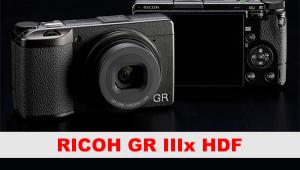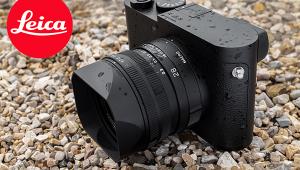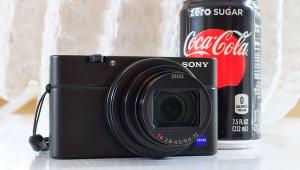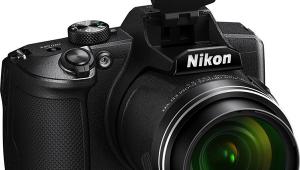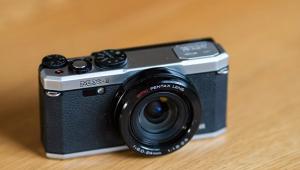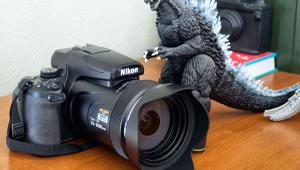Sigma DP2 Merrill Camera Review
The Sigma DP2 Merrill is dedicated to Dick Merrill (1949-2008), a photographer and engineer who developed/invented the Foveon sensor technology. The camera is based on former DP compact Sigma cameras, but uses the newest generation of the Foveon X3 sensor. This sensor records all three RGB values for every single pixel and has an image resolution of 4704x3136, or 14.75MP. Because of the multiplication of three RGB layers, the camera gains a “resolution” of 44.25MP. Officially, Sigma specifies the resolution of the sensor even higher: the spec sheet uses the gross resolution with 4800x3200 pixels (x three layers) and therefore indicates that the camera has a resolution of 46MP.
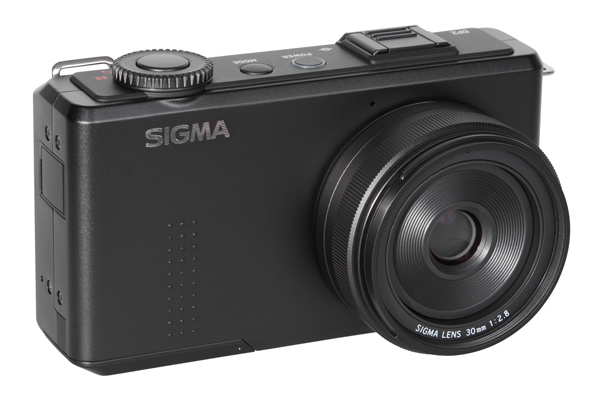

The large 3” LCD screen has a high resolution (920,000 RGB dots) and serves as the electronic viewfinder and control center for menu navigation.



The DP2 Merrill has a classic compact camera design, but doesn’t offer an optical (or electronic) viewfinder. Instead of the viewfinder it offers a large LCD screen on the back (3”) with high resolution (920,000 RGB dots). The high resolution allows the user to set up focus manually. The camera uses a lens ring to change the focus. This is very handy and more comfortable than a focus setting with the cursor field, for example.
The camera has a 30mm fixed focal length lens, which, due to the APS-C-sized sensor, is equivalent to a 45mm focal length on a 35mm camera.
The new image processor, dubbed “Dual TRUE II,” makes the camera faster than its forerunners. Startup time and shutter delay are now on a good level. The autofocus system still has an occasional faltering, but also is improved and is now faster than previous models. However, saving Raw files is still quite time-consuming; even with a fast Class 10 SD card our tests showed it can take up to 16 seconds to save one Raw image to the card. To a certain extent this is understandable, given the 3x larger Raw files (three colors per pixel) instead of the single layer of standard Bayer sensors. Raw files from the camera are extremely large: our two test shots were 52MB to 58MB for each picture!
The photographer can use a standard cursor field and a large setup dial on top of the camera for menu navigation and parameter setup. A QS (“Quick Setup”) button will open two setup menus (QS1 and QS2) for the most important parameters like white balance, ISO speed settings, image resolution, and image compression. The camera is able to record JPEGs and Raw files simultaneously. The new Sigma doesn’t offer scene modes. The standard exposure modes P, S, A, and M are activated by using the “Mode” button on the top and the large setup dial. The camera offers some image filter effects such as sepia color style.
The DP2 Merrill is able to record videos, but only with 640x480 pixels (VGA). The camera offers a standard TV interface for analog PAL or NTSC TVs, but an HDMI interface for high-resolution presentations is missing.

Image Quality
Color: The color reproduction of the Sigma DP2 Merrill is very good. However, the automatic white balance system sometimes caused some surprising results and created a slight color shift. The GretagMacbeth chart and the portrait shot show a shift into cooler colors (gray areas are shifted toward blue), but skin tones and other colors showed only minor color errors. This is also a result of the very discrete saturation of all colors. The test chart was reproduced with a mean color saturation of only 94.43 percent, which is very low even for a professional or SLR camera. And while older cameras with the Foveon sensor sometimes showed a “yellow-greenish” touch in skin tones, especially in JPEGs, the skin tones in our test shots look very natural.
Sharpness: The results of the resolution tests are excellent. The camera created images with extremely detailed structures and without any moiré or aliasing problems. The test result of 3046 lines in picture height is really amazing and corresponds nearly exactly to the nominal resolution of 3136 lines per picture height. We noted very good reproduction of fine details in our test shots; the hair, skin, and T-shirt in the portrait shot are nearly perfect. The crisp and clear structure of the images allow the user to interpolate the files and create images with even higher resolution. Our tests indicate that even images resampled as high as 25MP or 30MP showed no signs of deterioration.

Another special feature of the Foveon sensor is also responsible for the high-resolution results: it doesn’t need or use a low-pass filter. Cameras with standard CCD or CMOS sensors with the Bayer color pattern use low-pass filters to avoid moiré effects. These filters cause a slight blur when smoothing images to get rid of the moiré effects, but in the process often soften the image and reproduction of detail.

Noise: The camera offers ISO speed settings between ISO 100 and ISO 6400. Luminance and color noise artifacts are on a good level between ISO 100 and ISO 1600.
Using higher ISO speed settings will cause extreme color noise. Images taken with ISO 3200 show acceptable, but clearly noticeable noise artifacts, while images taken with the highest ISO speed settings are unacceptable. A benefit of the DP2 Merrill is its anti-noise filtering system, which works on a very inconspicuous level. In images with higher ISO speed settings (ISO 800 to ISO 1600) noise artifacts will be noticeable, but image details are crisp and clear.
The camera also showed good performance in our dynamic range test: a maximum of 11.6 f/stops. But dynamic range will decrease in images taken with higher ISO speed settings. It is already below 9 f/stops when using ISO 800 and will decline significantly at ISO 3200 and ISO 6400 settings.
The Sigma DP2 Merrill has a list price of $999. For more information, visit www.sigmaphoto.com.
Pro
+ Excellent reproduction of detailed structures
+ Classic camera design, stylish and robust finish
+ Easy handling with the sophisticated user interface
Con
- Missing optical or electronic viewfinder
- Missing built-in flash system
- Records video only with VGA resolution
Image Tech is where we publish web-exclusive lab reports on cameras. To read the reports please go to the Shutterbug homepage at www.shutterbug.com and click on the Image Tech tab on the top navigation bar.
New reports are published frequently, so check Image Tech for updates.
Lab results and test images by BetterNet, our TIPA-affiliated testing lab. Edited by George Schaub.
